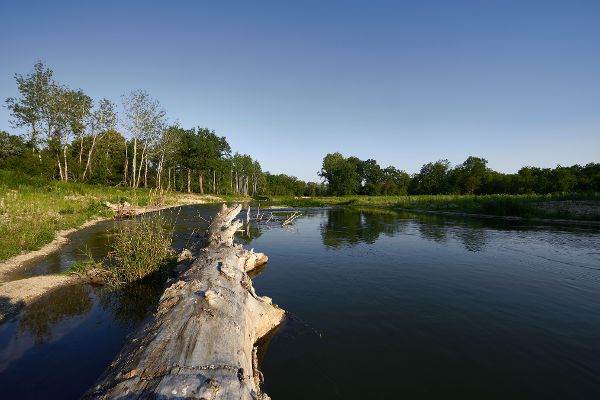Climate change - adaptation strategies for Austria’s water management

10 thesis of the Austrian water management concerning climate change
In order to be able to present the effects of climate change on water management in a scientifically sound way the Federal Ministry of Agriculture, Forestry, Regions and Water Managment, Directorate-General Water Management commissioned, jointly with water management divisions of the Federal Provinces the study “Strategies of adaptation to climate change in Austrian water management”. These 10 theses constitute the focus of the statements on the essentials. The total study can be downloaded under the attached link.
1. Floods
Regionally differing changes in run-offs are expected in the case of floods, which might range between - 4 % and 10 %. However, the insecurities of the effects on extreme events are quite big, especially in small areas. Natural fluctuations of floods are considerably larger than changes due to climate change. The introduction of a general climate surcharge for measuring values is not required according to the present state of affairs.
2. Low water
In the Austrian Alps the run-offs during winter low water periods will be considerably increased due to higher air temperatures, which is to be considered as positive. In the lowland regions of East and South Austria a decrease of run-offs in the case of low water might occur.
3. Glaciers
The decline of glaciers will continue. The run-off of glacier melt will presumably reach its all-time high around the years 2040-2050. In the immediate vicinity of glaciers a considerable increase of summer run-offs is to be expected during this period. In larger catchment areas the influence is only relevant in dry years.
4. Groundwater - quantity
For the South of Austria, where a decrease in winter precipitation is expected, as well as in the regions in the East of Austria with a low precipitation rate, again a decline in groundwater recharge is likely. In the North and in the West of Austria the groundwater recharge might increase.
5. Bed-load potential
Locally the bed-load potential might rise considerably in the area of the permafrost line. In larger catchment areas the increase to be expected is far below the natural fluctuations.
6. Water temperatures
A rise in the temperatures of surface waters of about 0.8°C by 2050 is to be expected. This higher temperature corresponds to a shift in the sea level by about 100 m. Thus, shifts in organic regions are to be expected as well. The rise in the water temperature could also be measured in the groundwater. Within the framework of the assessment of heat pipes (e.g. of power stations using the water of rivers as cooling water) this rise in temperature is to be taken into consideration.
7. Surface water quality
Due to the lower water quantity - as it might be the case in the lowland regions of East and South Austria - certain substances, such as pollutants, will not be so heavily diluted anymore and would occur in higher concentrations. In view of the high standards in the field of wastewater purification, a punctual improvement is only required in individual cases.
8. Groundwater - quality
Groundwater is subject to processes analogous to those of surface waters. Due to the rise in temperature the processes in the transitional area between surface and groundwater take place a little bit more rapidly and more completely and thus changes in the chemical composition are possible. A continuation of the groundwater protection policy pursued so far is appropriate.
9. Hydropower
The performance of run-off-river power plants will probably increase in winter and change a little in summer. This will result in a better adaptation to consumption. There is no need for action in the field of hydropower due to climate change.
10. Aspects of utilisation and demand
Due to the high availability of water in Austria and the slight changes to be expected, no large-scale lack of raw water for water supply is to be expected. However, at small-scale level, existing bottlenecks in areas with unfavourable water resources might aggravate. This is to be taken into consideration in the field of water resources management.